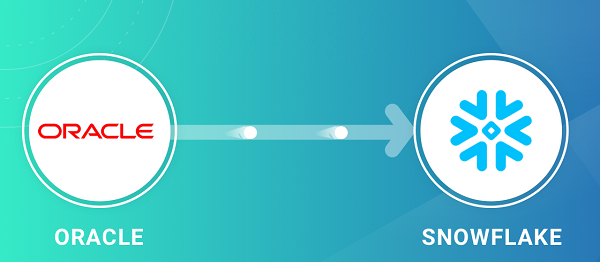Before going into the process to migrate data Oracle to Snowflake, a quick look at the two databases and solutions offered will be in order.
Oracle database
Oracle database runs on a wide range of hardware and helps in quick and easy storage and retrieval of data. The networking stack feature facilitates flawless integration of applications to the Oracle database. It has been one of the first databases to have offered support to GNU/Linux and is also ACID-compliant, thereby ensuring data reliability and integrity.
Snowflake
Snowflake is a cloud-based data warehousing solution and is offered as a Software-as-a-Service (SaaS) product. Its architecture is exclusively built for the cloud and not on “big data” software or any existing database. Hence there is no need to install or configure any additional software or hardware and all maintenance and tuning issues are directly taken care of by Snowflake.
Reasons to migrate data Oracle to Snowflake
Given the strength of the Oracle database, why would organizations want to migrate data Oracle to Snowflake?
- Users can work with both structured and unstructured data in Snowflake. Doing so in Oracle is very difficult.
- Snowflake as a data warehousing solution offers unmatched elasticity and flexibility. Users can move up or down in resource usage and pay for the quantum utilized only.
- Snowflake provides huge computing facilities. Multiple users working simultaneously on intricate queries and workloads will not feel any lag or drop in performance.
- Enterprises can quickly have data processing projects and analytics up and running without investments in hardware or software as Snowflake is a fully managed service.
Because of these advantages, more and more businesses are now opting to migrate data Oracle to Snowflake.

Steps to migrate data Oracle to Snowflake
Several steps are to be carried out for this process.
Step 1: Extracting Data from Oracle to CSV file
An SQL Plus query tool installed in the Oracle Database Server is used to query and redirect the result to a CSV file with the “Spool” command. The results are written in the file until the command is switched off. Usually, data extraction logic is carried out in the Shell Script. However, for data to be extracted incrementally, that is, records that emerge after the last pull has been executed, SQL has to be run in specific conditions.
Step 2: Formatting Data Type
It is often necessary to first process and format data type to ensure that the data structure at source matches that which is supported by Snowflake. This is to make sure that the migration process is smooth and seamless. Though most major character sets like ISO-8859-1 to 9, Big5, EUC-KR, UTF-8, UTF-16, and more are supported by Snowflake, it is critical to check for any data character mismatch. With the “File Format Option”, a customized format may be created to insert time and dates to a file in the table. The advantage is that Snowflake covers most primitive and advanced data types.
Step 3: Data Loading to a Cloud Staging Area
Before the step to migrate data Oracle to Snowflakeis taken, the data has to be kept in a cloud staging area. The staging can be an internal or an external one. In the former case, users and tables will be automatically allotted to an internal stage to which a name will be assigned. Here file format and date format are auto-applied. In the external stage, Snowflake currently supports Microsoft Azure and Amazon S3. For the S3 location, IAM with the necessary permissions is needed.
Step 4: Copying Files to Snowflake Table
The Data Loading Overview guides users through the migration process where the databases are limited. But it has limitations for large databases. In such cases, the PUT command is used to stage files and the COPY INTO table command to load processed data into an intended table. The data is to be copied from the internal or external stage where it is lodged. Follow these steps to migrate data Oracle to Snowflake. It is not a complex process as most of the steps are automated.







